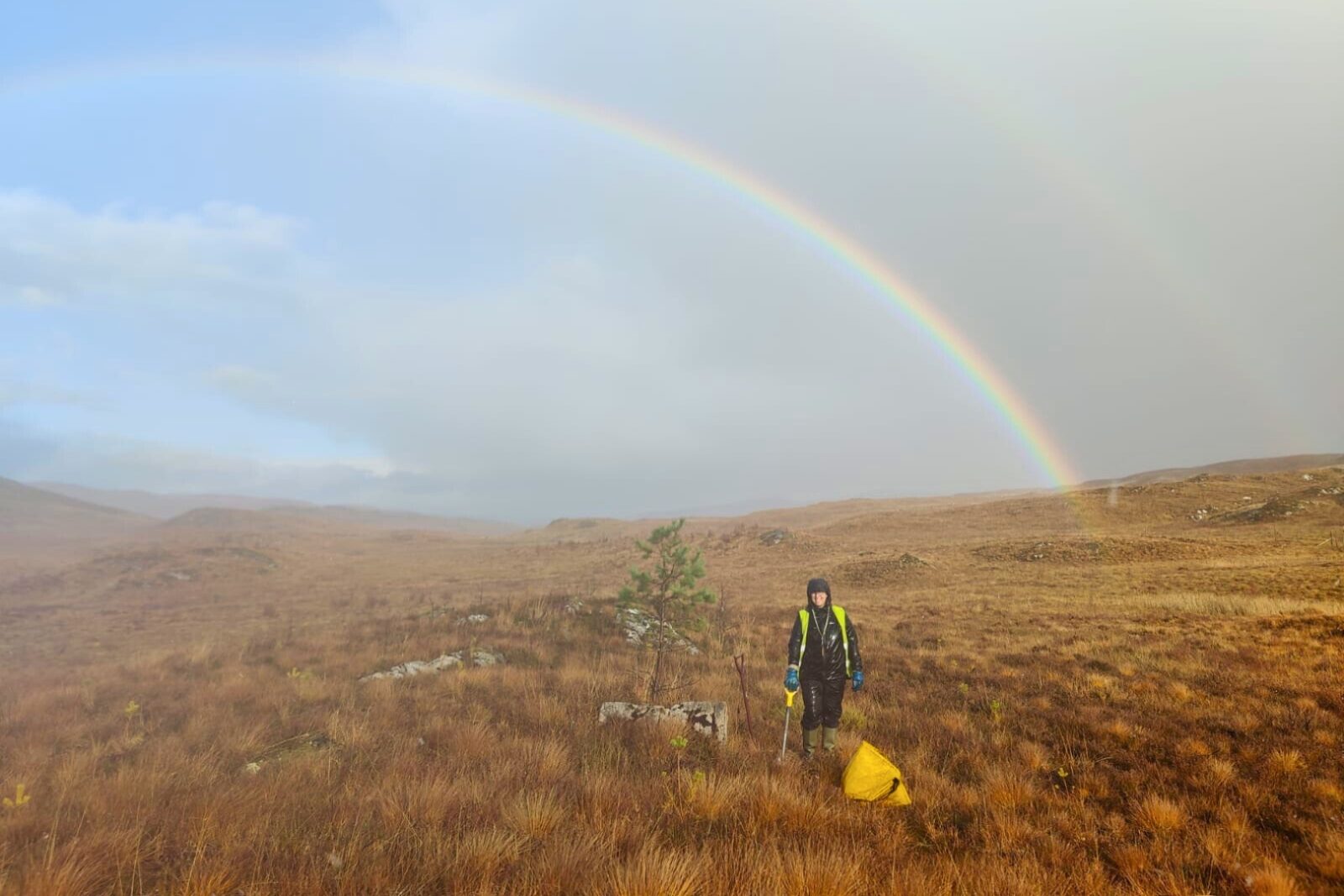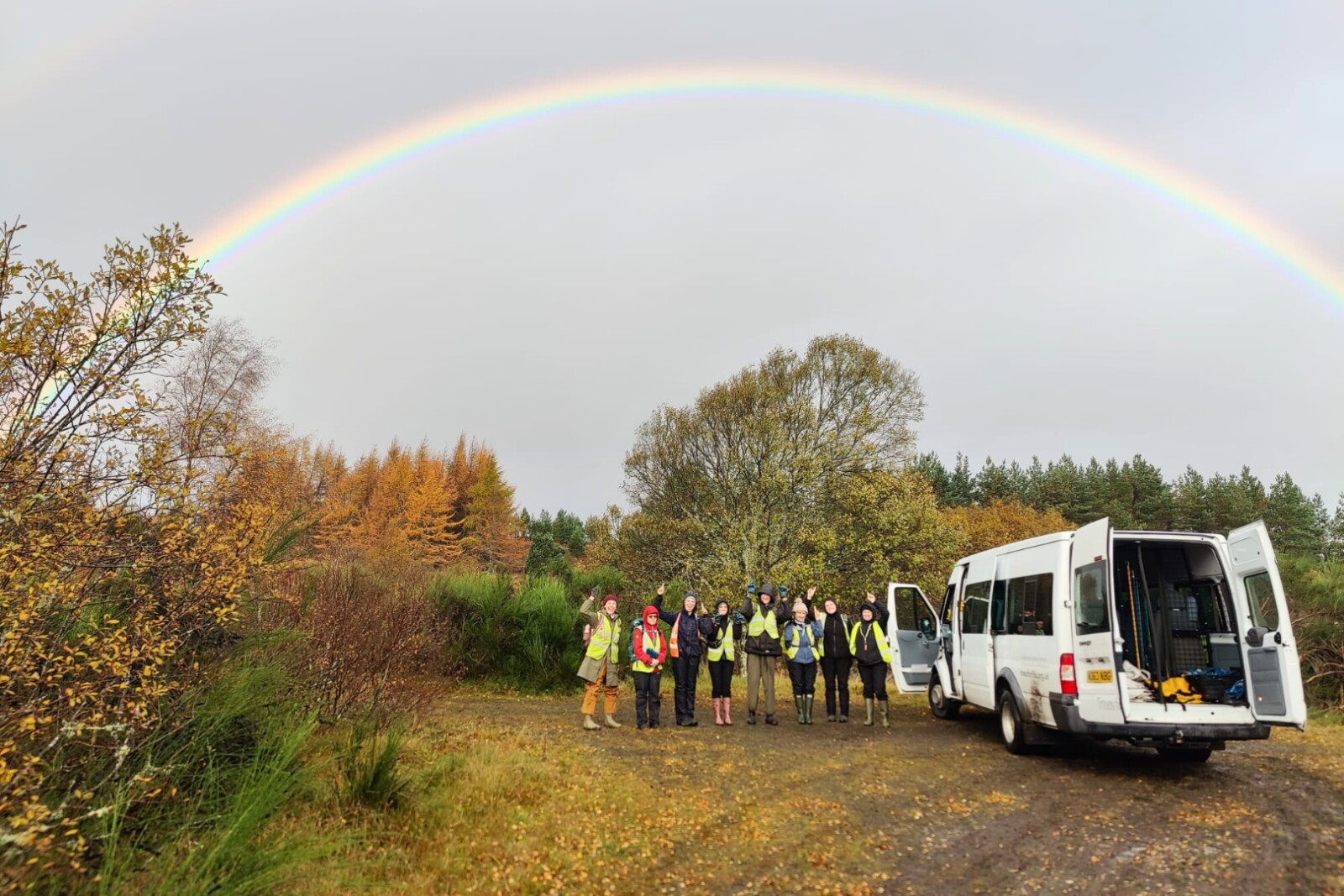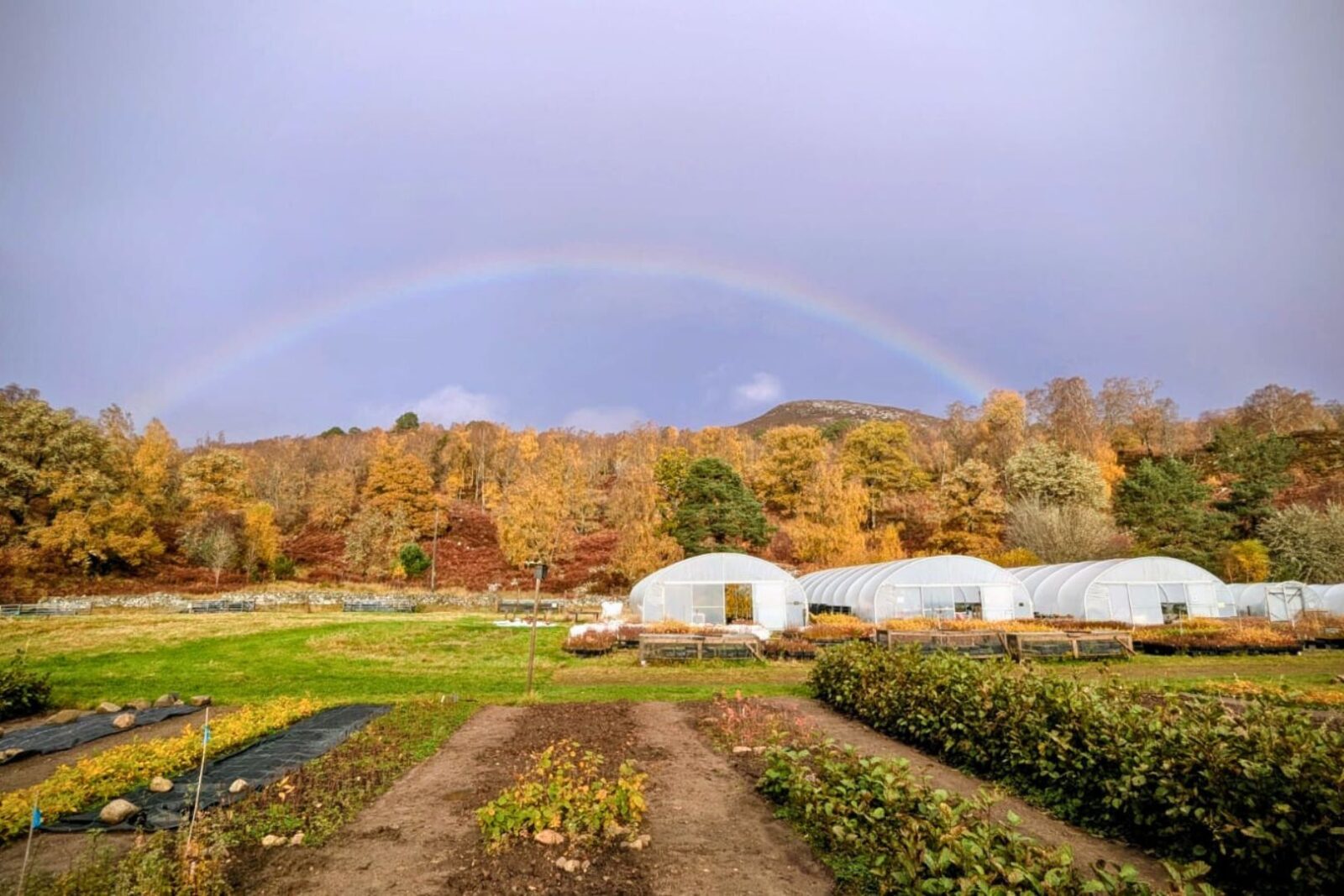Rewilding as an act of hopeful resistance
We’re delighted to feature a guest piece written by one of our brilliant volunteers, Sandra Rutter, who took part in a Trees for Life Rewilding Week at RSPB Corrimony in autumn 2025. Sandra reflects on the variety of tasks she took on – from tree planting to exploring the local landscape – the joy of being immersed in nature with like-minded people, and the insights gained from hands-on restoration work.
To say that everyone I spoke to in Sydney, Australia, about my plans to participate in a Trees for Life Rewilding Week thought it was just crazy enough to be entirely characteristic would be an understatement. People mentioned the distance, the weather, the walking, the digging, the isolation from friends and family, and the layers of clothes I would need to keep out the cold. One person rhetorically asked whether there were not already enough trees in Scotland.
Like many others, reading George Monbiot’s book Feral created the path which led me to a rainbow-topped hillside on RSPB Corrimony in the middle of a gloriously golden Highland autumn. However, in my case, reading it had triggered a fuzzy recollection of Trees for Life, and an even less certain familiarity with the purchase of the Dundreggan estate, buried somewhere amongst my memories of living in Scotland in the early years of the new Scottish Parliament.
After satisfying myself that the likelihood of midges in November was low, nothing could sway my determination to spend one week of my six-week long-service-leave European holiday learning how to tussock-surf across the moorland, a spade in each hand and a mud-streaked yellow bag of saplings slung across my shoulder. Despite my jokes about doing my own carbon offsets, deep down I knew that I urgently needed a week, steeped in nature alongside like-minded people, to rewild myself and a corner of the world.
I was in Sweden when an email came through from our fabulous guide, Liv, about the absolute necessity of wellies for our week beginning on the 1st of November. As it turned out, a request for pontoon bridges might have been more appropriate. We found out the reason for the email – and the wellies – after hiking in on our first full day to pick up our trees at Corrimony. The burn we were meant to cross to reach the more fertile soil of a patch of bracken halfway up a hillside had swollen after recent heavy rain and proved impassable.
After a hasty switch of the tree species in our bags, we were taught how to remove top-layers of grass or heather with the blades of heavy purple spades, and how to use smaller spades to dig holes of the right width and depth to cradle each sapling. Then we fanned out across the hillsides, bending our ears to the ground to listen for squelches of wet peat (so we knew where not to plant), and look for the tiny grains of sand which meant the Scots pine and juniper would have the drainage they needed to be happy in their new homes. Liv and Heather roamed amongst us, ensuring each new planting passed the ‘tug-test’ which would help to protect it from rapacious deer. Above us, rainbows arched across the sky like long rows of boiled sweeties.



Within two days, we left behind us a low ridge line dotted with what would one day be a patch of orange-limbed pine forest whispering with red squirrels, a range of bird species and, we hoped, reintroduced lynx. A further day’s planting along the River Glass added intermingled willow, alder and oak to the wide riparian border. Washing our spades in a chilly burn, we were again invited to imagine a forest standing along the open riverbank, enticing birds and animals to live amongst its sheltering leaves.
Cooried down every evening in our chalets in Tomich Village, we shared the cooking, the washing-up, and wines and whiskies bought from the well-stocked shop in Cannich. Thanks to the baking skills of one of our group, dinner always came with pudding, while generous portions of the main course left most of us with leftovers for lunch the next day. Stories were told, games were played, and lists of recommended books, podcasts and movies were drawn up and shared. Plans were made for a Trees for Life opera, to be performed in the empty reservoir owned by a group member. Like the trees in the forest, we built networks of connection which created a cohesive, supportive team, proof of the power and collective joy that can be created amongst people cooperating for a common cause.
This sense of connection and purpose was highlighted by our day spent working in the tree nursery at Dundreggan. From the tour to the rotating tasks, to the sight of the trees inside the polytunnels and stretching in rows outdoors for ‘hardening’, to the capable, enthusiastic nursery staff, we left with a clear sense of how much effort and commitment it takes to restore nature. Gently loosening the soil around the saplings before sending them to the shed for grading, we added preparation for planting days to our growing list of skills. As the sun dipped behind the hillsides, we filled the minibus to the point where the nursery staff joked we would be sharing our seats with willows on our way back to Tomich.
One of the other joys of a rewilding week is the chance to explore the local area. For me, this included a walk with other group members to nearby Plodda Falls, a manmade system of waterfalls built for a Scottish laird to entertain his guests over a century ago. As a new addition this year, the Friday of our week was spent canoeing the very river we had planted trees along, whose swift-running, smooth current carried us bubbling over light rapids and into a stunning gorge turned to gold by autumn leaves falling like fluttering raindrops.
Just as our week had begun with leaving carrots for newly released beaver in Loch Beinn a’Mheadhoin, so it ended with a muffled walk along a riverbank thick with oak, alder and birch leaves in search of an elusive beaver lodge. Appropriately, the full moon that week was the Beaver Moon. Like the gouges in the soil left by the digging of wild boar, it was a timely reminder that successfully rewilding the Highlands will dispel the silence of so many remnant woodlands and bring more than trees back into our lives.



One of the most satisfying outcomes of volunteering is the sheer volume of knowledge I developed in only one week. The diversity of fungi and lichen, proof of clean air and a strengthening ecosystem. The difference in taste and appearance of local Scots pine and introduced interlopers. The right number of birches to group together to keep them happy. The correct height and root-length for grading saplings. And aspen, those fussy flowerers, whose specific needs see them have an entire polytunnel at the Dundreggan nursery. On the train from Inverness to Edinburgh, I passed through the Cairngorms identifying birch and Scots pine marching slowly up the slopes. I longed to stop and plant amongst patches of bracken to fill the flat, bare expanses of moorland still crying out for rewilding.
As an aspiring writer, the volunteer week provided practical experience to inform a short story, Mycelium, I have recently written about Australian bush regeneration and the interconnectedness of the natural world. My notebook is filled with details written in the evenings after a day spent outdoors, fragments of conversations and information gleaned from our guides and my fellow group members, which have helped to build my understanding of a country I left nearly twenty-four years ago. Although my experiences of rewilding at home come nowhere the scale and intensity of Trees for Life’s ambitions, and the methods used differ significantly, at their core both ends of the world are engaged in the same struggle to preserve what remains and replace what has been lost, in the natural world around us and deep within ourselves.
One of the central convictions the volunteer week has left me with is the belief that rewilding is an act of hopeful resistance, in which each tree added to a moorland, a hillside or in a riparian zone rebuilds the strands of being which tie our world together. Coming from a country where people still have to sit on platforms high amongst the canopy to protect old-growth forest from clear-felling, a rewilding week is a necessary tonic of optimism. One of the strengths of Trees for Life’s volunteer weeks is its success in fostering unity in a world where many of the powerful desire fracturing the connections between people and wild places, preferring to leave human and natural ecosystems atomised and fragile to better exploit us. Building this solidarity with each other and with nature gives us strength and hints at the world we could – and should – build for the wellbeing of all.
Would you also like to help bring more life back to our landscapes? Join us for a Rewilding Week in the Scottish Highlands and help restore Scotland’s magnificent Caledonian forest.


